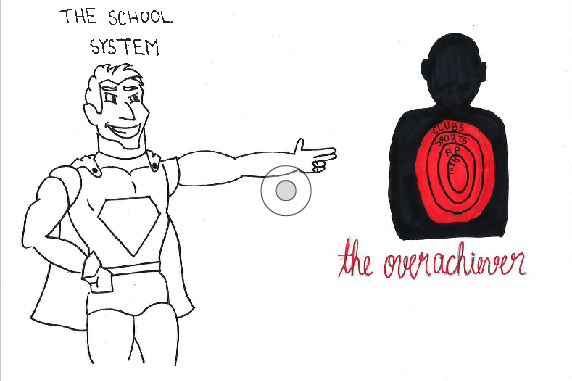Targeted: Overachievers
More stories from Tom Tom Staff

It’s so clearly visible to everyone else; it’s so easy to spot the overachievers—the ones that make it look easy. There is a group of students in each grade that tend to separate themselves from the rest by being “those people.” They’re the people that are athletes, only enroll in AP and honors classes, partake in clubs, have leadership within the school and finish all their work—all at the same time. As impressive as it is and as proud as we are of our fellow Sequoits for accomplishing a massive amount of things in a such short amount of time, when are we going to address this problem? When does it become too much? Expectations keep increasing for these students, and no one seems to be doing anything about it.
The above mentioned type of people will never stop doing what they’re doing—adding things onto their plate, that is. If the system itself doesn’t change, the overachievers of the school will soon be buried too deep in responsibilities to save themselves. As a staff, we’ve noticed and sometimes experienced the phenomenon of overachieving. This commonly placed label carries the meaning of being “the best,” but being an overachiever does not guarantee anyone a top rank within the school. Just because one is involved in 30 activities and enrolled in every AP course to exist, it doesn’t mean that they have been or will be overall successful.
What’s it worth?
Some of these targets are successful. Some of them are better than the majority of the student body, both academically and athletically. But when we take a closer look, the students that accelerated in their fields are too stuck in their textbooks to stop and look around. They never get a chance to stop and smell the flowers—literally.
And then there are those who spend their time trying to be the best, but end up falling short each time. The load of activities suddenly has no value simply because they believe they are successful only if they reach perfection in every element. The result is disappointment, or, even worse, trying to find an easy way to achieve what they wanted.
District updates tell us that the district will now pay for 90 percent of AP tests. Is this just another incentive to target the overachievers or a way to increase the school rank and status? Arguably, both are true. The more AP tests taken, the better our school looks; the more AP tests taken, the easier it is to pull the strings of overachievers. What’s it worth? You decide.
